The world of Hats
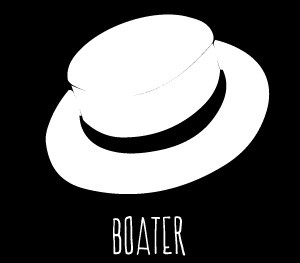
BOATER:
it’s a typical straw hat with a flat and straight crown, commonly known in the respective Italian and French variants as paglietta or canotier. Its use was often associated with the sport of rowing, as part of the uniform.
PILLBOX:
its shape is similar to a drum, the well-known musical instrument; it is a classic female hat, flat on top and without brim.
DEERSTALKER:
the investigator’s hat, made famous by the character of Sherlok Holmes, widespread almost exclusively in the UK countryside as a hunting hat.
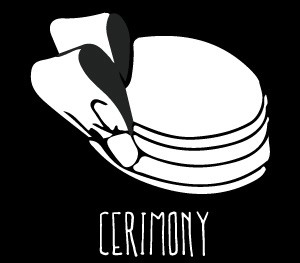
COCKTAIL:
a small, extravagant female headdress, used for official occasions to replace the wide-brimmed hat. It is usually decorated with feathers, bows and veils.
COWBOY:
is a hat associated with the clothing of the American cowboy, has the crown carved in the middle and a large brim raised on the sides. The concept of a wide-brimmed hat used to ride comes mainly from the tradition of Mexican vaqueros. It is considered to be particularly functional as its breadth is capable of protecting from sun and rain, and in this sense it is still used today in the work field.
TRILBY:
Originally intended for women, it owes its name to the protagonist of a late nineteenth-century theatrical comedy who, at the premiere of one of her shows, wore a hat with this shape. The trilby has a shorter, narrower and angled crown than the fedora. From the 1920s onwards it became very popular also among men. It was used a lot in the Sixties for a practical reason: the roofs of the cars were low and the space limited, so it was necessary to reduce the hat too! It is in effect a unisex hat.
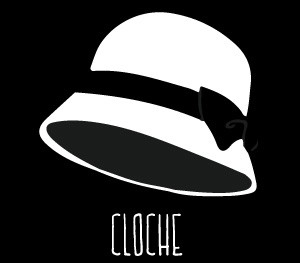
CLOCHE:
female bell-shaped hat from which it takes its name, is associated with the fashion of the ’20s and’ 30s, period of its maximum diffusion. Purchased by the Empress of Austria in Vienna and the Grand Duchess of Tuscany, the first specimens are made of straw. The Museum of Straw and Weaving in Florence preserves a very rare cloche – datable to the end of the nineteenth century and called Cappello della sovrana – made with a very fine straw braid.
TRAPPER:
called in Russian ušanka (ушанка). It is a hat of Russian origin mainly used by the military, but also common among civilians. Fur-lined, it has a truncated cylinder shape with long side flaps to keep the head and ears warm. The Italian name colbacco derives from the French colback which in turn derives from the Turkish kalpak (fur headdress), although in French the word colback designates the tall military fur hat like the one supplied to the Granatieri di Sardegna.
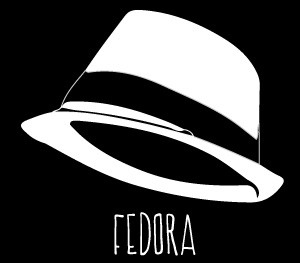
FEDORA:
it is a winter hat of soft felt that is hollowed in its length under the crown. It has a crown like a truncated cone, pinched at the front on both sides with a brim of medium width. The term fedora came into use in 1891. The word comes from the title of a 1882 screenplay by Victorien Sardou, written for Sarah Bernhardt. Sarah played Princess Fedora, the heroine of the comedy, wearing a hat with this shape. It is also improperly known as Borsalino, since actually this would be the name and trademark registered by the Italian clothing company Borsalino, to which it is undoubtedly recognized the great contribution to make this model of headgear famous all over the world. It became famous for being habitually used by celebrities such as Al Capone, Federico Fellini, François Mitterrand, Humphrey Bogart, Harrison Ford, Dan Aykroyd, John Belushi in the film Blues Brothers and Robert Englund.
BASEBALL:
often associated with the sporting discipline from which it takes its name, is a casual hat in cotton fabric with a wide curved or flat visor and round crown. Baseball caps are often fitted on the back of a rubber band or a velcro band, which serves to adapt the size of the headgear to the wearer’s head. The current style of the baseball cap was popularized by the New York Yankees player Babe Ruth in the late 1920s.
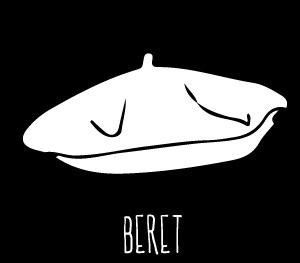
BERET:
in Europe commonly called also basque, is a cloth headgear, without flaps and visor. It is usually made of knitted wool or felt. Even if at first was used between soldiers, it then spread successfully also as a casual accessory. Basque became popular among the peasants of the Basque Country, from which, in Europe, it took its name, and in which it is the traditional national headgear.
BEANIE:
The simplest and most practical of winter hats. Made of wool or cashmere, it keeps your head warm by wrapping it completely. For those who love perfectly styled hair it is certainly not ideal!
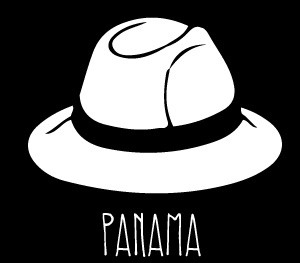
PANAMA:
Originally from Ecuador, it is traditionally woven by hand with fibers derived from the still tender leaves of a dwarf palm, called in Spanish toquilla palm. This hat has the name of the city of Panama only because this has been for centuries its main commercial port of departure. Depending on the quality of the weaving process, it can take from one day to eight months for production. In 2012, the traditional weaving of Panama is recognized among the oral and intangible heritage of the humanity of Ecuador.
FASCINATOR:
it’s something between a hat and a hairband. It is considered as the most fashionable, whimsical headgear, often decorated with fabric flowers, veils and feathers.
TOQUE:
The toque is a term that indicates a typology of caps deriving from the more distant term la toque, that is the long wig of the nobles of Spain and France of the fifteenth century. Later the term went to indicate caps that above all indicated a charge, a title, a profession: for example the touch of the judge, or the academic touch, or even the Toque blanche, that is the chef’s cap.
Today the term has instead passed to indicate the modern winter floppy cap in wool, handmade or industrially made, whose main purpose is to protect from cold in winter.
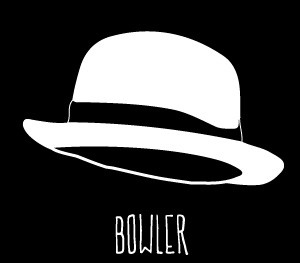
BOWLER:
the classic bowler is a hard and convex felt hat. In the USA it is called the derby hat, a name deriving from the count Edward George Derby, who wore it. The bowler hat has been worn by many actors who have made it a hallmark of their characters; one above all is Charlie Chaplin (Charlot).
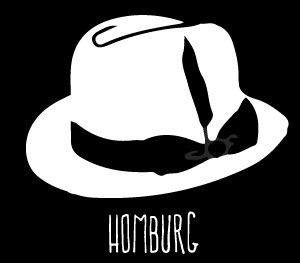
HOMBURG:
semi-rigid male felt hat, characterized by central hollow and wide brim with raised hem. Also known as Lobbia, this Italian name derives from the deputy Cristiano Lobbia who in 1869 was the victim of a brutal aggression along a street in Florence, at that time the Capital of Italy and seat of Parliament. He was struck by a big blow on the head (which hollowed his hat) and three stabs to his chest, between the indignation of Florence and the entire Regno d’Italia. An enterprising hatter took advantage of the publicity aroused by the story to sell Lobbia style hats.
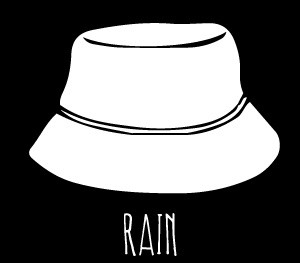
BUCKET:
waterproof fabric hat, commonly known as a fisherman.
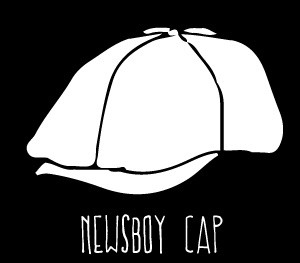
NEWSBOY CAP:
a casual hat born in North America at the end of the 19th century, in soft wool with a rigid visor. The crown consists of segments, finished at the top of the crown with a button. The style was popular in Europe and North America between the late nineteenth and early twentieth centuries among boys and adult men. As the name suggests, it is a model commonly associated with journalists.
KIPPAH:
The kippah or kippa is the headgear used fluently by observant male Jews in places of worship, even if the most religious of them wear it during daily life; it common use of observant Jews to cover the head anyway out of respect for God, and for this purpose any headgear is suitable.
Who invented Hats? History and Origin of Hats
Hats are essentially a cover for the head and are worn for many different reasons :fashion, sun protection, ceremonies or rituals and are often different for women and men. The first representation of a human being with a covered head dates back to 15 thousand years ago: some graffiti in a cave in Lussac-les-Châteaux (France) testify to it. Back then it was a defense tool against dangers such as falling rocks. Over time it became a symbol, like the pileus, which for the ancient Greeks (but also in ancient Illyria, Etruria, ancient Greece, Pannonia and Epirus) indicated belonging to the lower classes: in felt or leather, it was used by workers, fishermen and sailors (even Ulysses was depicted with the pileus). In ancient Rome, however, it was a symbol of freedom: it was given to slaves when they became free men. And that’s why Phrygian caps were called liberty caps as they were worn during the French Revolution.
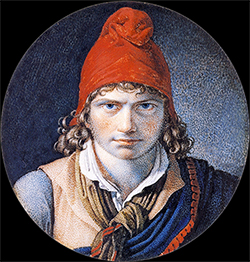
Berretto Frigio: chiamato berretto della libertà durante la rivoluzione francese.
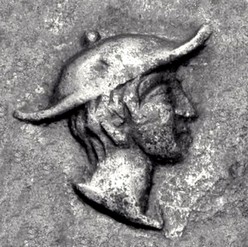
L'antico copricapo greco Petasos
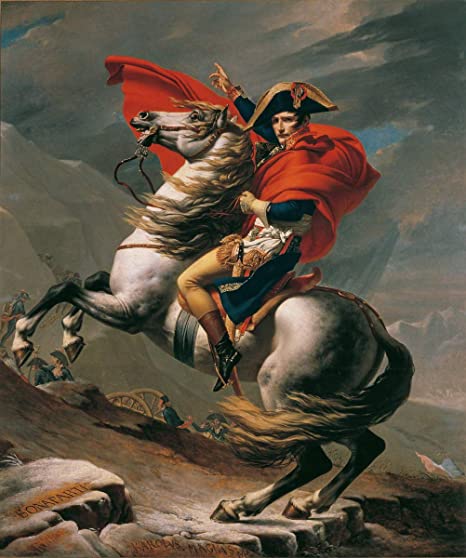
Bonaparte valica il Gran San Bernardo - Jacques-Louis David (1800-1803)
The first hat with the brim, always of Greek origin, was the petasus, thanks to which you could shelter from the sun: typical of peasants and travelers, it was also that of heroes such as Theseus and Perseus and, with the addition of fins, of the heavenly messenger Hermes.
Throughout the Middle Ages and beyond, the hood was used, often simply a scarf or a piece of cloak put on the head. In the mid-1400s, upper-class Nordic women wore hennin, an elongated cone with a veil that descended from the tip: fairies and princesses of the fabe are often represented with this headdress, which could reach 90 cm and have a crown on the tip. In the same period the hat began to spread in Europe, through the French kings Louis XI and Charles VIII, depicted with different precious headdresses. But it was from 1500 that it became a decorative accessory and all kinds of products were produced: in velvet, silk and beaver fur, enriched with gems, feathers, veils …
At the end of 1600 Louis XIV, the Sun King, had a 35-carat diamond mounted on his headdress: only he could wear it at court and at the table, the others were obliged to take off their hats. Louis XIV also extended the use of the tricorn, previously worn only by soldiers and sailors, renting it to those who wanted to visit the palace of Versailles. In 1700 anyone owned a tricorn, even women, perhaps in a mini version, to be placed on top of the wigs.
During the French Revolution (1789) the soldiers switched to the bicorn hat or felucca, while the rebels wore conical caps with a rounded tip, a reinterpretation of the Phrygian cap: introduced in the first centuries before Christ by the peoples of Phrygia (Anatolia), it distinguished the « barbarians » by the ancient Greeks. It became a symbol of freedom and revolution, also carried by Marianna, icon of the French Revolution.
The golden century of the hat is the nineteenth century, when the top hat was invented, also worn by US President Abraham Lincoln. The first to put a rabbit in it was the famous French magician Comte, in 1814. Since this headdress took up a lot of space, it was also made in a folding version, the gibus, which thanks to a system of springs could be flattened and placed under the seat when you went to the opera. In these years there was a real explosion of styles, shapes and materials for women’s hats, wrapped in bows, ribbons and feathers, in satin, velvet, cloth, horsehair, lace, fur or straw. The most famous were the gainsborough, with its super feathers, and the cabriolet, tied with a large ribbon under the chin.
At the beginning of the 20th century, no one left the house without a hat: the women had so huge that they could not walk side by side on the same sidewalk; the men wore the fedora (so called because an actress used it during the show of the same name), that of Indiana Jones, in felt and with a crease on the top, while the working class wore the bowler hat, immortalized by Charlie Chaplin.
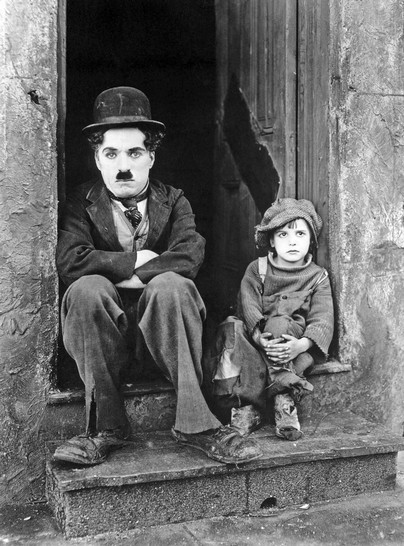
Charlie Chaplin ed il suo celebre cappello
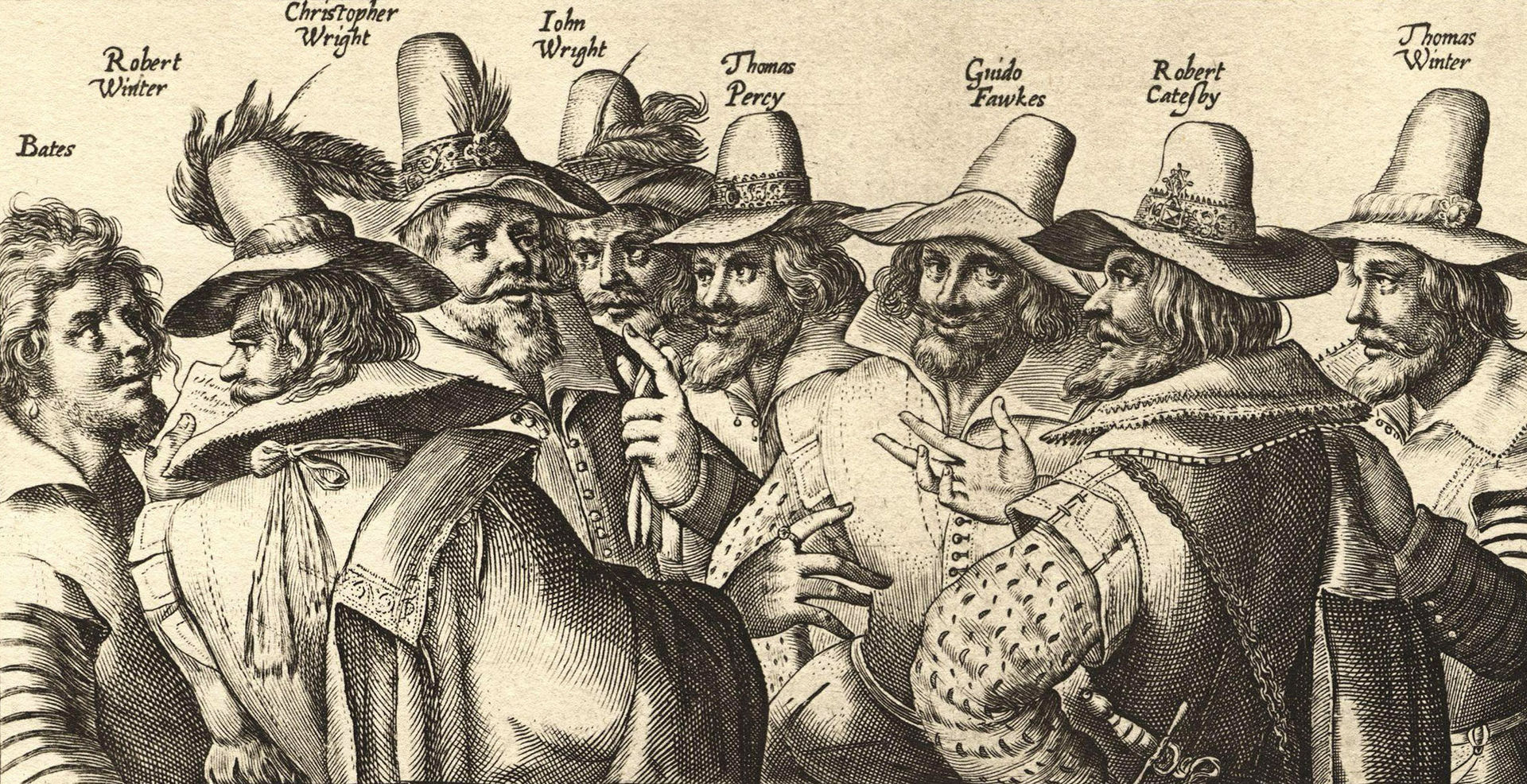
Inghilterra, 1600 (Dettaglio di un'incisione raffigurante i Gunpowder Plotters)
What about the modern baseball cap? It was conceived in 1940, but an ancestor of it appeared as early as the second half of the 1800s, on the heads of the players of the Brooklyn Excelsior, in New York.
After the Second World War people began to go out even without a hat, which however has never stopped being used: in addition to maintaining its original protective function, it can be seen everywhere, whether it is the white skullcap on the head of Pope Francis or a weird accessory on Lady Gaga’s head. And taking it off is always a sign of education and respect: a head without a hat indicates the absence of any threat.
Source: Enciclopedia Treccani, Focus Magazine

